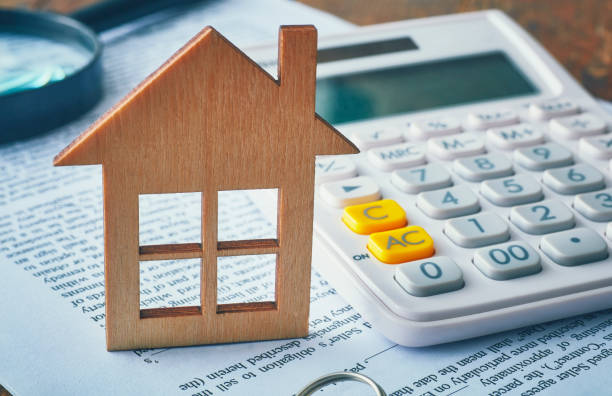Maximizing Your Property Growth with a Strategic Investment Approach
A property growth calculator is a valuable tool that helps investors forecast the potential appreciation of their real estate assets over time. By entering key variables such as the current property value, expected growth rate, and investment period, investors can predict how much their properties will be worth in the future. This calculation enables investors to make more informed decisions about where to invest and when to buy or sell properties. The accuracy of these projections depends on market conditions, historical growth rates, and economic trends. Using this tool regularly can assist in refining investment strategies and improving portfolio performance.
Factors Influencing Property Growth
Location, demand, infrastructural development, and local economic conditions are few of the several elements influencing the value of a property. Value is more likely appreciated in properties in high demand in places with good access to schools, transit, and utilities. Property development also varies depending on outside economic elements including government policy, inflation, and interest rates. Investors wishing to maximise their returns must first understand these elements. Maintaining knowledge of regional changes and market trends helps investors to make better decisions and spot places with more growth potential.
Constructing a Portfolio of Property Investments
One of the best strategies to control risk and maximise earnings in a property investment portfolio is to create diversified one. Residential, commercial, or industrial real estate among other property categories should all be part of a well-rounded portfolio including sites in several places. Diversification permits more stable profits and helps shield investors from market volatility. Having homes in several areas also lessens one’s exposure to local economic downturns. Regular assessment is also necessary for a good portfolio to make sure every asset keeps matching with market conditions and fulfilling investment objectives.

Value of Market Research for Property Purchase
Success of property investment depends much on market research. It lets investors spot profitable prospects, grasp market trends, and assess possible hazards. Investors can make better selections by examining information such demographic trends, rental returns, and past price development. Through market research, investors can also identify developing areas and rising neighbourhoods that might eventually provide better long-term returns. Moreover, knowing the competitive environment enables investors to keep ahead of trends and spot homes with the best possible development.
Maximising ROI with Strategies for Long-Term Property Development
Those seeking long-term property growth should concentrate on techniques encouraging constant appreciation over time. This entails selecting homes in high growth potential areas, maintaining them correctly, and monitoring market developments. Frequent property improvements help to raise its worth over time as well. Furthermore, since a long-term property appreciates in value, keeping onto one instead of flitting around usually results in better profits. Maximising profits on investment depends on a patient, well-considered strategy.
Location Affects Property Expansion
Among the most important considerations in property investment is location. Because of great demand, close proximity to facilities, and public transportation access, properties in desirable locations usually appreciate faster. Investing in developing neighbourhoods can also result in notable expansion as these places draw more renters and buyers. Predicting how a place will impact property development depends on knowing local zoning rules, infrastructure initiatives, and community changes. Smart investors look for homes in places ready for development so they may guarantee higher profits.
Controlling Risk in Property Development
There are risks associated with property investment; so, good investors have to learn how to control them. This entails routinely evaluating every asset, diversifying the investment portfolio, and keeping current on the state of the market. An investment strategy has to consider unforeseen maintenance expenses, interest rate changes, and economic downturns as hazards. Investing in diverse kinds of real estate all around different locations helps to reduce risk. Having backup plans and emergency money also helps one negotiate difficulties when they present themselves.

Renovations’ Part in Raising Property Value
Renovations provide a calculated approach to raise general portfolio performance and raise property value. Those who undertake deliberate improvements—such as updating kitchens, including energy-efficient renovations or curb appeal enhancement—often find notable returns. Renovations not only raise the property’s resell value but also might raise rental revenue. To guarantee the investment makes financial sense, one should carefully evaluate the cost of modifications against the possible value growth. A well-run renovation project can make an underperforming asset profitable.
Analysing the Correct Purchase or Sale Timing Land
Property investing depends critically on timing. Returns can be much enhanced by knowing when to buy or sell. To maximise returns, investors should purchase homes at times of market stability or when prices are expected to grow and sell when market conditions are ideal. Tracking patterns like changes in property supply, demand, and interest rates will enable investors to make more wise choices. Examining personal financial objectives and the general performance of the investment portfolio also helps one decide the appropriate moment to act.
Maximising Portfolio Growth Using Rental Income
A property investment portfolio can be much enhanced by the consistent cash flow rental income offers. Carefully choosing rental homes in highly sought-after markets will help investors maximise their rental returns and use this revenue to pay off mortgages faster or reinvest in fresh properties. Sustained development depends on maintaining high occupancy rates, hence investors should concentrate on houses appealing to consistent tenants. To guarantee long-term viability and rental income increase, landlords also have to keep on top of tenant satisfaction and property maintenance.

Tax Considerations for Property Investors
Understanding the tax implications of property investment portfolio management is essential for maximizing returns. Investors can take advantage of tax deductions for expenses such as mortgage interest, property management fees, and repairs. Additionally, capital gains tax can impact the profits made from selling a property, so it’s important to plan accordingly. By working with a tax advisor or accountant familiar with real estate, investors can minimize their tax liabilities and ensure they are in compliance with local regulations. Proper tax planning can greatly enhance the overall profitability of a property investment portfolio.
Conclusion
In the world of property investment, growth and sustainability go hand in hand. Using a property growth calculator as a guiding tool, combined with diligent market research and strategic portfolio management, investors can position themselves for long-term success. Diversifying investments across locations and property types, keeping an eye on emerging market trends, and managing risk through thoughtful planning are all essential elements of a winning strategy. Patience and a focus on long-term growth, rather than quick wins, allow investors to maximize their returns and build a stable, profitable portfolio.






